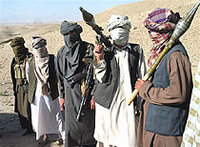While considerable disagreement exists on precise steps for creating a more stable Afghanistan, most key international policymakers now agree that any successful strategy there, and in Pakistan, hinges on the ability to mainstream anti-government fighters and potential fighters into the political and economic systems in those countries. That was reflected in the communiqué that emerged from last week's London summit on Afghanistan, which called for, among other things, reintegrating Taliban who cut ties with al-Qaida and other extremist networks. But more attention needs to be given to the difficulties involved with such an approach, which will likely prove extremely challenging and controversial.
Many Afghan and Pakistani officials, including Afghan President Hamid Karzai and Pakistani NWFP Governor Oweis Ghani, agree that high unemployment and poverty drives many young Pashtun men on both sides of the border to take up weapons, largely for monetary compensation. Many of these same officials agree that most of the population in the Pashtun region view Taliban militants as an obstacle to peace, not the solution. Therefore, given jobs, vocational training, and economic opportunities, Pashtun youth will opt for integration into Afghan and Pakistani society at the expense of Taliban, al-Qaida and other extremist networks. Although planned reintegration has for now only been formally announced on the Afghan side of the border, the Pakistani government will likely follow suit, particularly if the program begins to yield results.
One key factor for successful reintegration will be determining not only the sincerity of those fighters who lay down their weapons, but in distinguishing between these less dangerous Taliban and those who maintain an undying allegiance to extremists groups. This will be more complex than just dividing them into "good" Taliban, "bad" Taliban, and the fence-sitters in between, as some have suggested. As the reintegration process takes place, one can expect a range of factors -- including regional and local intrigues, individual settling of old scores, hidden agendas, and ex-fighters who gather intelligence for the continuing militancy -- to complicate the effort.

